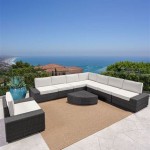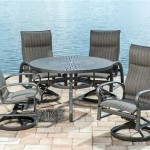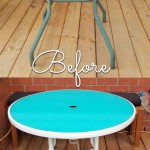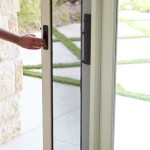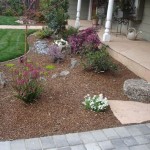```html
How to Make a Concrete Patio Table
Constructing a concrete patio table offers a durable and aesthetically pleasing addition to any outdoor space. A concrete table not only withstands weather conditions but also provides a modern, industrial look that complements various architectural styles. This article provides a detailed guide on how to build a concrete patio table, outlining the necessary materials, tools, and step-by-step instructions.
Before commencing the project, meticulous planning is essential. This includes determining the desired dimensions of the table, selecting the appropriate type of concrete mix, and gathering all required tools and materials. A well-defined plan minimizes errors and ensures a smoother construction process. The overall design should consider the intended use of the table, the available space, and the desired aesthetic.
Key Point 1: Preparing the Mold
The mold is crucial for shaping the concrete tabletop and legs. The mold dictates the final dimensions and design of the table. It is imperative to construct a sturdy and leak-proof mold to prevent concrete from seeping out during the curing process. Accurate measurements and precise assembly are vital for achieving a professional and visually appealing result.
For the tabletop mold, use melamine boards. These boards have a smooth, non-porous surface that prevents the concrete from sticking, simplifying the demolding process. Cut the melamine boards according to the desired dimensions of the tabletop. Construct a frame using screws and sealant to create a watertight enclosure. The interior corners of the mold should be sealed with silicone caulk to prevent sharp edges on the finished concrete slab. These sharp edges can be a point of weakness prone to chipping.
Consider adding a reinforcement mesh, such as wire mesh or rebar, within the mold. This reinforcement enhances the structural integrity of the concrete slab, preventing cracking and increasing its load-bearing capacity. Cut the mesh to fit within the mold, ensuring it is slightly smaller than the overall dimensions. Position the mesh in the center of the mold's depth by placing it on spacers before pouring the concrete.
For the table legs, several options exist. Pre-cast concrete legs can be purchased, or forms can be created using wood or cardboard tubes. If constructing the legs from scratch, ensure the forms are sturdy and can withstand the weight of the wet concrete. Similar to the tabletop mold, seal all joints and seams to prevent leakage. If using cardboard tubes, consider coating the inside with oil or a release agent to facilitate demolding. Internal rebar is highly recommended for leg support.
Before pouring the concrete, apply a release agent to the interior surfaces of the mold. This agent prevents the concrete from bonding to the mold, making demolding significantly easier. Options include commercial release agents, mineral oil, or even cooking oil. Ensure the release agent is applied evenly and thoroughly to all surfaces that will come into contact with the concrete.
Key Point 2: Mixing and Pouring the Concrete
Properly mixing and pouring the concrete is paramount for achieving a strong and durable table. The concrete mix must be consistent and free of lumps to ensure proper curing and prevent weak spots. The pouring process should be controlled and deliberate to minimize air pockets and ensure even distribution throughout the mold.
Use a high-quality concrete mix specifically designed for outdoor applications. This type of mix typically contains additives that enhance its resistance to weathering and cracking. Follow the manufacturer's instructions for mixing ratios. The ideal consistency is similar to that of thick oatmeal. Adding too much water weakens the concrete, while insufficient water results in a crumbly mix.
Mix the concrete in a concrete mixer or a large tub using a shovel. When using a mixer, add water gradually while the mixer is running until the desired consistency is achieved. If mixing by hand, thoroughly combine the dry ingredients before adding water. Ensure all ingredients are evenly distributed throughout the mix. Avoid overmixing, as this can introduce excessive air and weaken the concrete.
Pour the concrete into the prepared molds in layers. Start with a thin layer to cover the bottom of the mold, then add subsequent layers until the mold is filled. After each layer, vibrate the mold to remove air pockets. This can be achieved by gently tapping the sides of the mold with a rubber mallet or using a concrete vibrator. For the tabletop, ensure the reinforcing mesh remains positioned in the center of the concrete layer.
Once the molds are filled, level the surface of the concrete using a screed board or a trowel. Remove any excess concrete and ensure the surface is smooth and even. For a more refined finish, use a bull float to further smooth the surface after the initial leveling.
Key Point 3: Curing and Finishing the Concrete
Curing is the process of maintaining the moisture content of the concrete to allow it to properly hydrate and gain strength. Proper curing is crucial for achieving a durable and long-lasting concrete table. The finishing process involves removing the molds and applying any desired surface treatments to enhance the table's appearance and protect it from the elements.
After pouring the concrete, cover the molds with plastic sheeting to prevent moisture loss. Keep the concrete damp for at least seven days, ideally longer. This can be achieved by periodically spraying the concrete with water or covering it with wet burlap. The longer the concrete cures, the stronger it will become. Avoid exposing the concrete to direct sunlight or extreme temperatures during the curing process.
Once the concrete has cured, carefully remove the molds. Use a pry bar or a rubber mallet to gently loosen the molds from the concrete. Avoid using excessive force, as this can damage the concrete. If the concrete is difficult to remove, try tapping the sides of the mold with a rubber mallet or applying heat with a heat gun. Be patient and work slowly to avoid chipping or cracking the concrete.
After demolding, allow the concrete to fully dry for several days before applying any surface treatments. Once dry, inspect the concrete for any imperfections, such as air bubbles or surface irregularities. These can be filled with a concrete patching compound or a grout. Sand the surface of the concrete using progressively finer grits of sandpaper to achieve a smooth and polished finish. Start with a coarse grit to remove any rough spots, then gradually move to finer grits to refine the surface.
Apply a concrete sealer to protect the table from stains, water damage, and UV rays. Choose a sealer that is specifically designed for outdoor use. Follow the manufacturer's instructions for application. Typically, the sealer is applied in thin coats, allowing each coat to dry completely before applying the next. Multiple coats may be necessary for optimal protection. The sealer will also enhance the color of the concrete and give it a more polished appearance. Consider adding a decorative aggregate to the mix for a unique look.
Finally, attach the table legs to the tabletop using a strong adhesive, such as epoxy or construction adhesive. Ensure the legs are evenly spaced and properly aligned before the adhesive sets. Allow the adhesive to fully cure according to the manufacturer's instructions. For added stability, consider using screws or bolts to secure the legs to the tabletop. Drill pilot holes before inserting the screws or bolts to prevent cracking the concrete. Once the legs are securely attached, the concrete patio table is ready for use.
```
Build An Outdoor Table With Quikrete Countertop Mix Family Handyman

Diy Concrete Outdoor Coffee Table The Honest Home

Stunning Led Concrete Patio Table With A Built In Cooler

Concrete Outdoor Table Base With Uncookie Cutter Lazy Guy Diy

Diy Concrete Outdoor Coffee Table Love Renovations

Diy Concrete Top Dining Table The Inspired Work

Diy Outdoor Dining Table Ideas Projects Garden

How To Make Concrete Furniture Exchange

Stunning Led Concrete Patio Table With A Built In Cooler

How To Make A Lightweight Concrete Table


